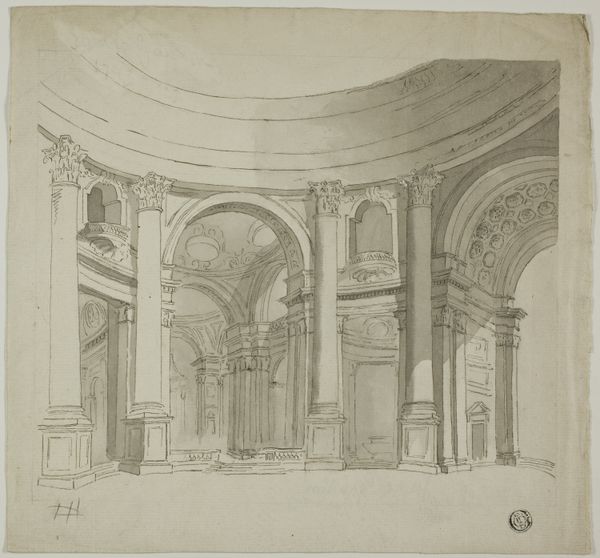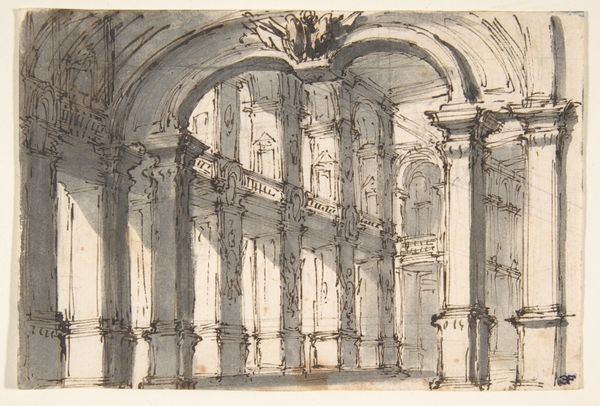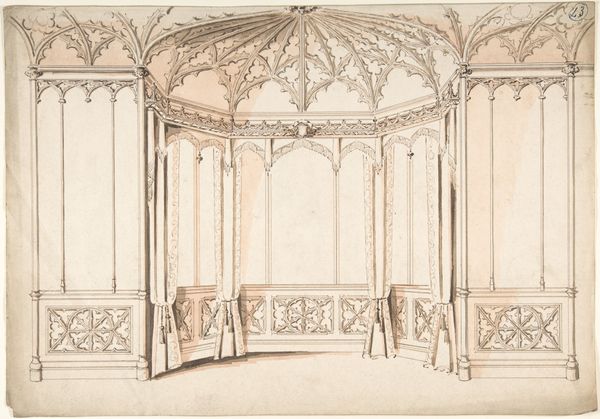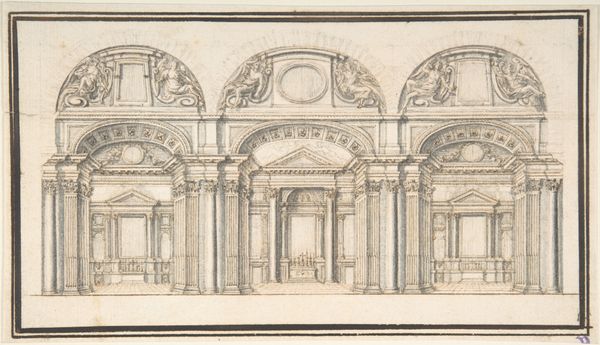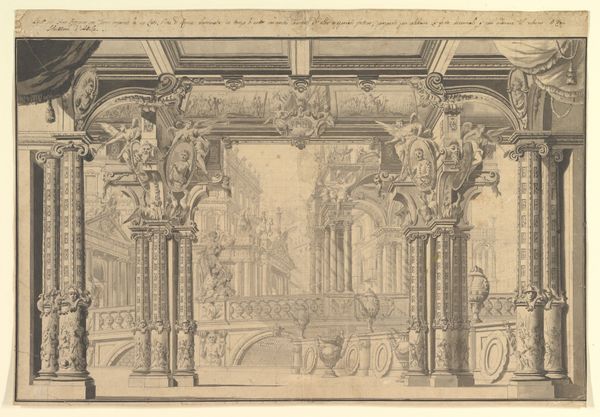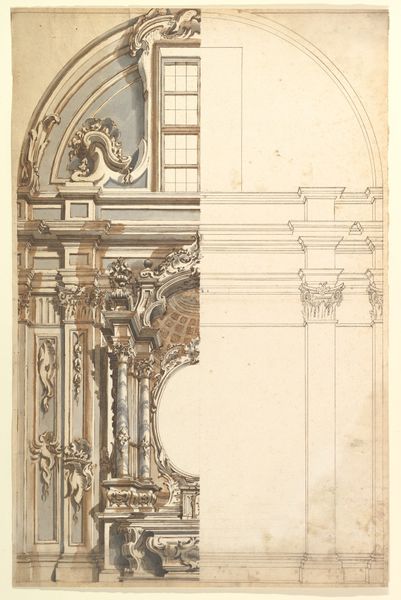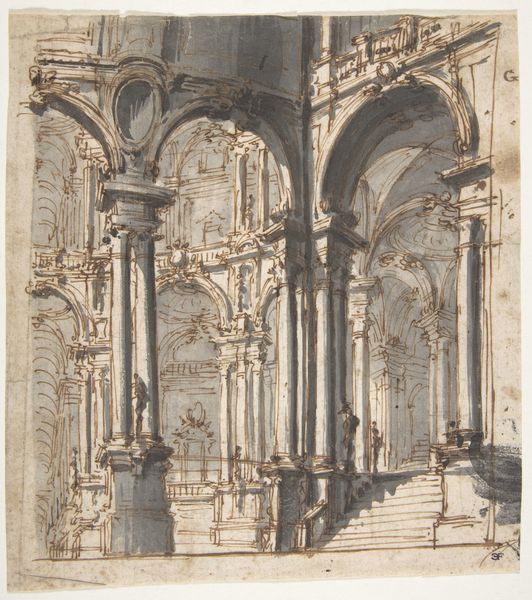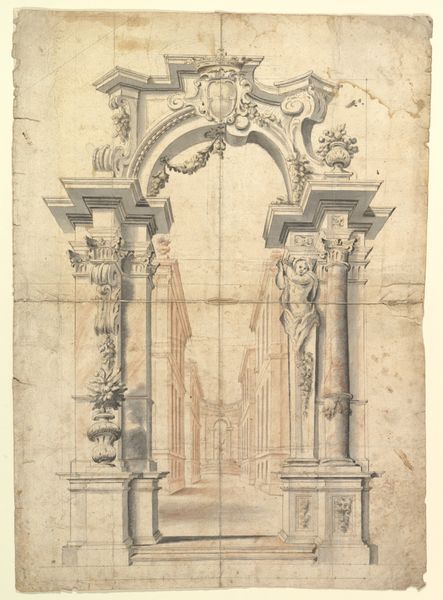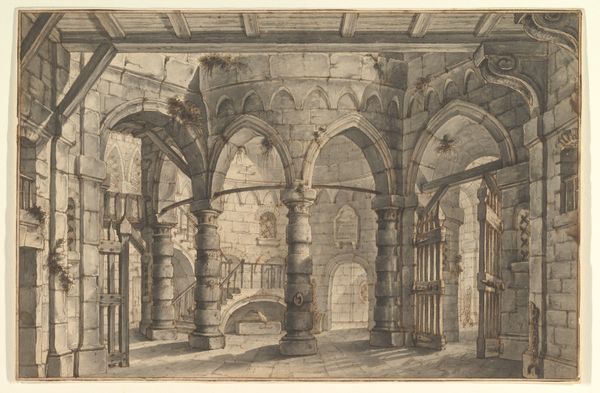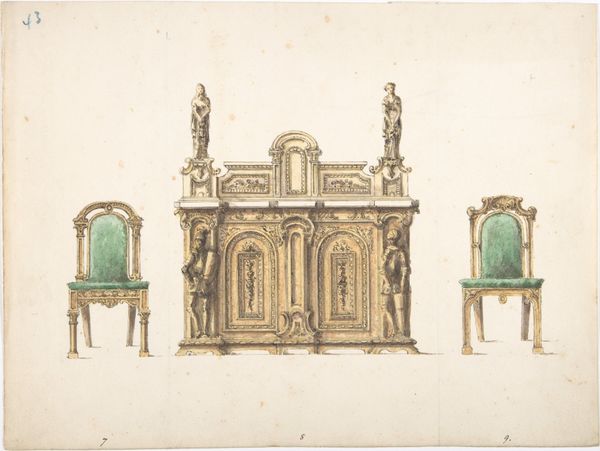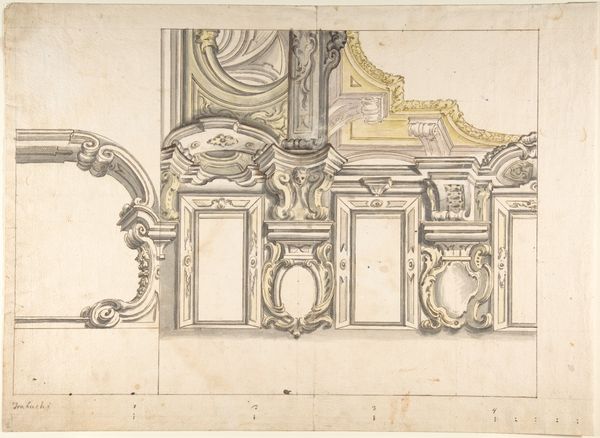
Design for a Painted Perspective Wall Decoration 1700 - 1780
0:00
0:00
drawing, print, paper, pencil, architecture
#
architectural sketch
#
drawing
#
baroque
# print
#
pencil sketch
#
sketch book
#
landscape
#
etching
#
perspective
#
paper
#
pen-ink sketch
#
pencil
#
architecture
Dimensions: 11 5/16 x 17 1/16 in. (28.7 x 43.4 cm)
Copyright: Public Domain
Editor: So, this is an anonymous drawing titled "Design for a Painted Perspective Wall Decoration" dating from somewhere between 1700 and 1780. It's made of pencil, pen, and ink on paper. It looks so theatrical and a little dreamlike to me, but I'm not sure what to make of it. What do you see in this piece? Curator: I see a careful construction of an idealized space, playing with perspective to create depth and allure. Consider how the arches frame and repeat, inviting the viewer's eye deeper into the imaginary landscape. Doesn’t that remind you of stage design and the theatrics of power that permeated Baroque sensibilities? Editor: Absolutely. The perspective almost feels forced, or amplified. Why emphasize it so much? Curator: Precisely! Perspective, here, isn't just about representing reality. It symbolizes control and the ability to order the world through rational thought. And notice the lack of human figures. What does that suggest to you? Editor: That’s interesting. It feels like the space is intended for someone important, almost a stage waiting for the main character. It almost feels cold and empty without them. Curator: Exactly. This absence speaks volumes, doesn’t it? The architecture itself becomes the protagonist, a monument to ambition and idealized vision. We are invited to admire not daily life, but an architectural ideal. A symbol meant to create a lasting feeling of authority, which remains intact despite not being "lived in". Editor: That’s a great point. I never thought of architecture itself being symbolic in that way. Curator: Think of architecture like visual language; arches, columns, decorations are loaded with meanings. Even today, we use these visual elements to evoke feelings in interior design and urbanism. The artist here masterfully uses those codes, which have resonated throughout cultural history. Editor: I see this drawing in a totally new light now! Thank you for opening my eyes to the symbolism hidden within architecture itself. Curator: It was my pleasure. Recognizing how images encode memory and aspirations reveals how connected we are to the people of the past.
Comments
No comments
Be the first to comment and join the conversation on the ultimate creative platform.
